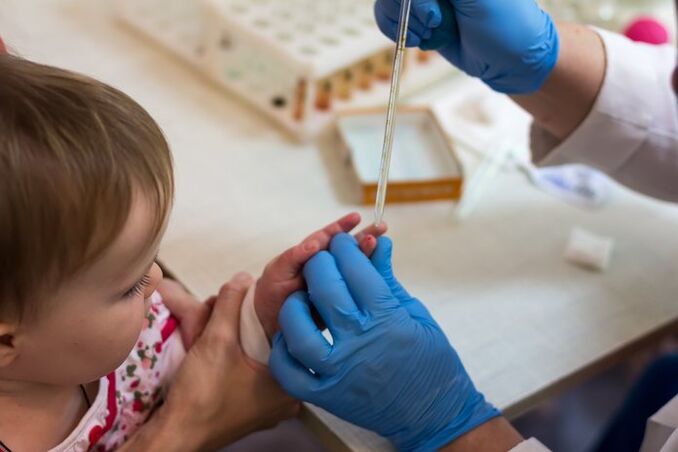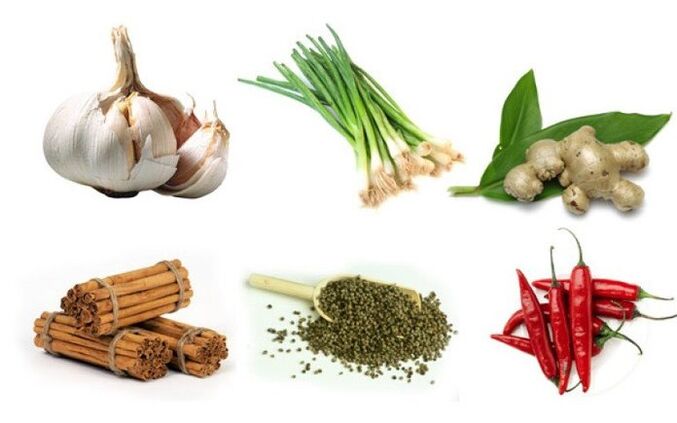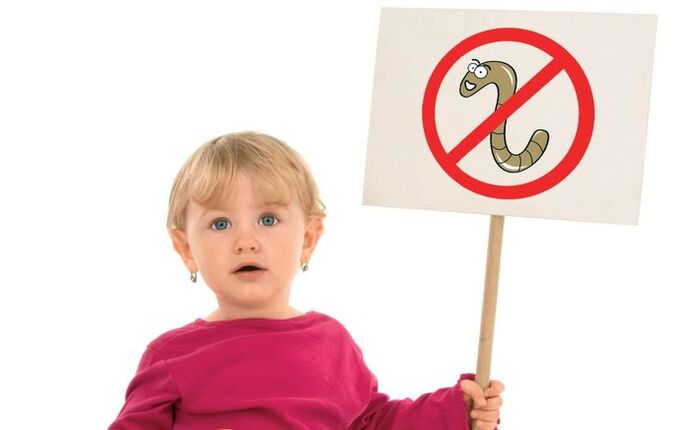
Helminths or worms are the general name for parasitic worms that live in the human body. Most of them live in the intestinal tract, however, some extend beyond it. Children are especially vulnerable to worm infection. Due to insufficiently strong immunity, which is not capable of killing parasites, and a long latent period of infection, worms can cause serious harm to a child. This is mainly due to severe poisoning, allergic reactions and, in certain cases, organ damage.
In this material we will see the main causes of helminth infection, its types and methods to treat them. This applies to both traditional and traditional medicine.
Causes of infection
First of all, it should be noted that protecting a child from worm infection seems like an almost impossible task. This applies to STHs and is due to their method of infection. However, there are other types of worms, with different infection mechanisms. Next, we will discuss soil-transmitted helminthiasis and other types of worms in more detail.
The worms developin soil and water, after which they enter the human body and lay their eggs there. Then, along with the excrement, they return to the soil or water and the cycle repeats. By eating unclean fruits and vegetables, there is a very real chance of contracting soil-transmitted helminthic infections. Infection is also possible through dirty hands or the skin of the feet.
infection throughcontact with animals- it's not a myth. When coming into contact, playing and carrying out joint activities with an already infected animal, there is a non-illusory chance of becoming infected with worms. Their eggs fall on the skin or clothing, where they continue to mature and sooner or later can enter the body.
Biohelminthosis infection occurs due toconsume little processed meat and fish products. Particularly dangerous are undercooked kebabs, poorly salted lard, sushi, raw milk and insufficiently cured fish. In addition to worms, when consuming these products there is also the possibility of contracting an intestinal infection.
Infectionthrough insect bites- occurs very rarely, since in most cases the insects deposit their larvae under the skin of the victim. However, some types of worms are transmitted by insects.
With a strong immune system, worm infection is much less likely. In addition, over time, a person simply develops resistance to worms in his area. They do not have time to be born or they simply die shortly after birth. However, when moving to a new area or when the immune system weakens, the protection against worms is weakened.
types of worms
There are about 300 species of worms, but 70 species are common. These types can be divided into three broad categories:
- Nematodes or intestinal worms.Most often, children are infected with this type of worm. This species includes pinworms, whipworms, trichinella and nematodes.
- Tapeworms or cestodes.Infection by this species occurs through poorly processed meat. This species includes tapeworms, tapeworms, and echinococci.
- Trematodes or trematode parasites.Most often, worms of this species cause opisthorchiasis, fascioliasis, schistosomiasis and paragonimiasis.
In the vast majority of cases, worms parasitize in the intestines, however, their eggs, together with the bloodstream, can spread throughout the body. As a result, worms can begin to multiply in the liver, gallbladder, muscle tissue, lungs, and even the brain.
Symptoms
Considering that worms are parasitic organisms, infection with them does not appear immediately. After all, the parasite's goal is to avoid the host's attention for as long as possible. That is why symptoms appear in case of multiple infections or after a long latency period.
Typically, the first symptoms appear only 2 to 4 weeks after the worm eggs enter the body. All symptoms are usually caused by poisoning with helminthiasis waste products. In some cases, that is, when the child's immunity is reduced, helminthiasis infection may appear earlier.
Betweenmain signs of worms in childrencan be distinguished:
- Increased appetite without weight gain;
- Increased salivation;
- Painful feeling in the stomach, nausea and unstable stools;
- Dizziness and headaches;
- The appearance of allergic reactions;
- Sleep disturbances, worsening sleep and increased irritability;
- Increased hair loss and nail breakage;
- Frequent inflammatory processes of the nasopharynx and genitourinary tract.
With prolonged infection, developmental delays, dysfunction of internal organs, and neurological abnormalities are observed.
It is important to note that a strange smell from a child's mouth, abdominal pain, frequent hiccups and grinding of teeth at night do not in any way indicate a worm infection. These symptoms are just a myth.
Diagnostic functions

Given the variety of symptoms of infection with this parasite, making an accurate diagnosis is not the easiest task. First of all, you must dostool analysisdue to the presence of parasite nests. However, this is not the most reliable method. What happens is that, in certain cases, there may be several individuals of the same sex in the carrier's body that are not capable of reproducing. Additionally, some species lay eggs very rarely, making it difficult to establish a clear diagnosis. That is why stool tests for worms are carried out three times with an interval of several days, since it is necessary to detect the exact moment of reproduction of the parasite.
Infection with the parasite may also be indicated by a high level of eosinophils in combination with low hemoglobin withgeneral blood tests.Scraping of enterobiasis and examination of the abdominal cavity using ultrasound or x-ray are also used for diagnosis. To clarify the diagnosis, doctors can resort to biological analyzes of urine and feces, as well as immunological studies.
Once the exact type of parasite is determined, as well as the level of damage caused to the body, treatment can begin.
Methods for treating worms in children.
The main method of treatment for helminths, of course, is medication. However, in certain cases the use of traditional medicine is also allowed. It is important to remember that, in most cases, home remedies are not powerful enough to deal with a moderate, let alone serious, infection. They should be used as aids. Naturally, traditional medicine also has a number of limitations. These and other means will be discussed in more detail below.
Medicines

Drug treatment for helminth infection aims to destroy the worms and reduce the level of toxins they release. In the treatment of worms, especially in children, it is highly undesirable to use broad-spectrum drugs. The fact is that they have a very strong effect and their use, even with the correct dosage, can cause serious problems. Additionally, the wrong medication can cause more damage than the parasites themselves. That is why it is important to make an accurate diagnosis and determine what type of parasites the child is infected with.
To eliminate toxins, vitamin complexes containing vitamins B and C, glucose solutions and infusions of water-salt solution are used. In certain cases, antihistamines and diuretics are also used. And if the heart and liver are damaged, hormone therapy may be required. To enhance the effects, enzyme preparations that improve digestion, as well as enterosorbents that remove waste products of parasites from the body, are often used.
Will home remedies help?

In general, doctors do not recommend using home remedies to treat worms. This is mainly due to the fact that the power of home remedies is often not enough to completely destroy parasites. However, despite the fact that folk remedies cannot become an alternative to traditional means, this does not mean that they should not be used. On the contrary, they will be an excellent complement to pharmacological treatment. Among the most effective and safe home remedies are the following.
Vegetable oilsThey are an effective method to combat almost all types of helminths. The most effective are apricot, cedar and sea buckthorn oils, but a safer option for children would be flax or hemp oil. The oil should be consumed in its pure form, one teaspoon three times a day before meals. If your child refuses to eat it, add it to porridge or soak bread in butter. The course of oil treatment is one week, after which it is advisable to take a two-week break.
Another effective treatment for helminths isPumpkin seeds. This is mainly due to the presence of cucurbitin in them, a rare amino acid that kills worms. Pumpkin seeds can be consumed raw or made into milk. In its raw form, 120 grams are consumed for children from three to seven years old, 200 for children from seven to eleven and 300 grams for children under thirteen years of age. Seed milk can be prepared by passing 200 grams of seeds through a meat grinder, pouring two glasses of boiling water over them and infusing the drink for a quarter of an hour in a water bath. Next, we filter the broth and feed it to the child throughout the day, before meals.
GarlicIt is also a common remedy for helminthiasis. It is often used to prevent parasite infection and also as an adjuvant in enterobiasis and ascariasis. It is used as follows: finely chop two cloves of garlic and pour a glass of milk over them. The resulting drink is consumed twice a day, a quarter of a glass, for four days.
For therapeutic purposes, medications are often used. enemaswith herbal decoctions. This is done to eliminate parasites from the intestinal lumen. For these purposes, decoctions of wormwood, chamomile and other herbs are suitable. You can also use a milk-garlic enema, the recipe for which was given above. When using an enema, it is important that its temperature is not lower than room temperature and that its volume does not exceed 100 milliliters. It is also important to increase the amount of liquid consumed in the form of mineral water or fruit juices.
barrier methodIt is most often used for helminthiasis caused by pinworms. Its essence is to block the lumen of the large intestine using special tampons moistened with vegetable oil or petroleum jelly. This is done so that the adult worms do not migrate to the surface of the anus and continue reproducing. The child's anal passage is blocked with tampons for a month. It is important to note that this method is not effective for extraintestinal forms of helminthiasis or in cases of severe enterobiasis.
Before using any of the above methods, you should always consult and obtain approval from your pediatrician.
In addition to means aimed directly at combating parasites, auxiliary means can also be used. Any recipe that helps improve digestion and eliminate toxins from the body will do. Substances rich in vitamin B and C are also beneficial. You should consult your doctor before use.
Prevention of helminthiasis in children.

As we have already discovered, the vast majority of cases of worm infection occur through the oral area. Therefore, prevention of parasitic infection mainly includesmaintain personal hygiene rules. In addition, you should wash vegetables and fruits well before eating them, and also make sure that fish, meat and dairy products have undergone sufficient heat treatment. If you have pets, preventive anthelmintic treatment should be carried out. And lastly, you must keep your house clean.
In addition, there is an opinion that to prevent helminthiasis, anthelmintic drugs should be taken regularly. This opinion is very controversial in the medical field. Some doctors believe that the prophylactic use of such drugs does not guarantee reinfection and places additional stress on the body. This group of doctors maintains that basic hygiene is enough to reduce the chances of infection. The second group of doctors believes that it is simply impossible to do without the prophylactic use of these drugs, given the non-compliance with hygiene rules by children. The issue of prevention is even more aggravated if the child is constantly in contact with animals that visit the street.
One way or another, only you can decide whether it is worth using worm medicines for preventive purposes. However, it is worth thinking about whether:
- Are you planning a trip to the southern countries?
- The child attends kindergarten;
- There are animals at home that visit the street;
- Children play in the sandbox or have frequent contact with the ground;
- Children spend a lot of time in nature.






































